Abstract
The procyanidins (the most common type of proanthocyanidin or condensed tannin) from cell suspension cultures derived from cotyledons of Douglas Fir have been compared with those isolated from leaves of strawberry and avocado. Seventy per cent methanol (v/v) extracts from 100 milligrams fresh weight samples were analyzed by a combination of C18-reversed-phase columns with high-performance liquid chromatography, and normal phase paper chromatography. (−)-Epicatechin and its oligomers were generally retarded longer on C18 columns than the corresponding units made of (+)-catechin when eluted with solvents made up of 5% acetic acid alone or mixed with methanol up to 15% (v/v). Douglas fir preparations contained the most complex set of procyanidins and consisted of oligomers of catechin and epicatechin, whereas strawberry and avocado contained mainly (+)-catechin and (−)-epicatechin derivatives, respectively.
Full text
PDF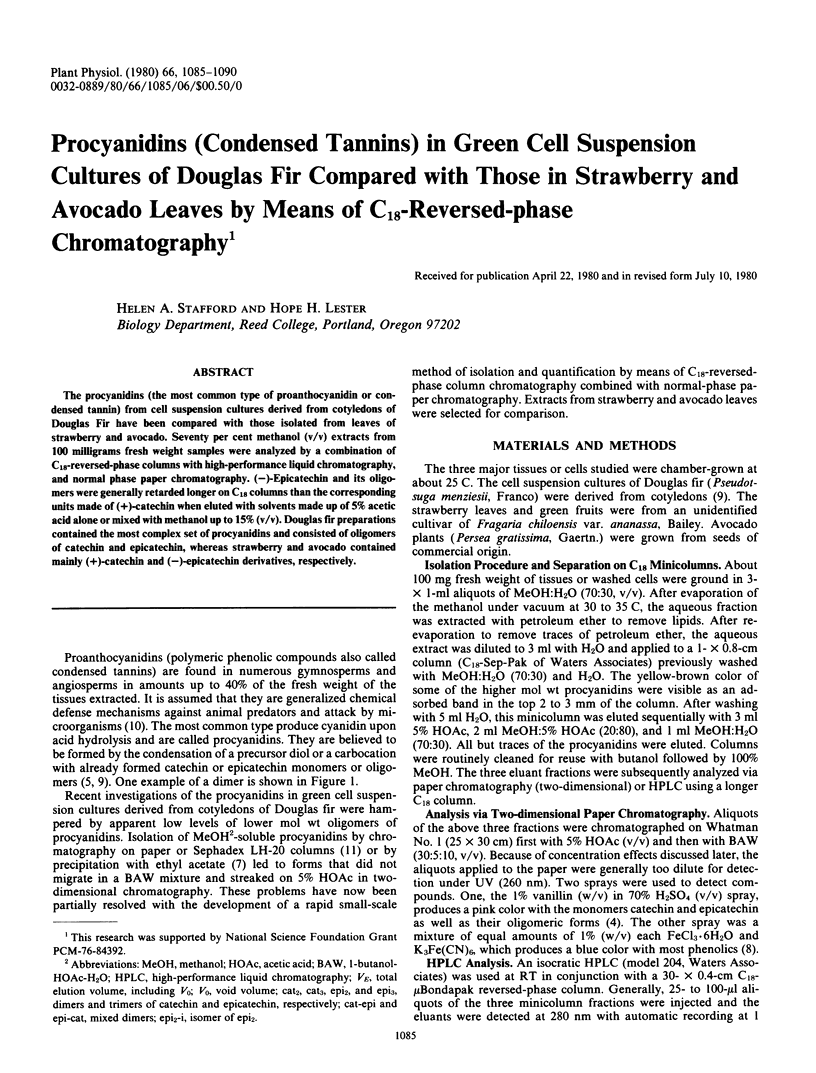
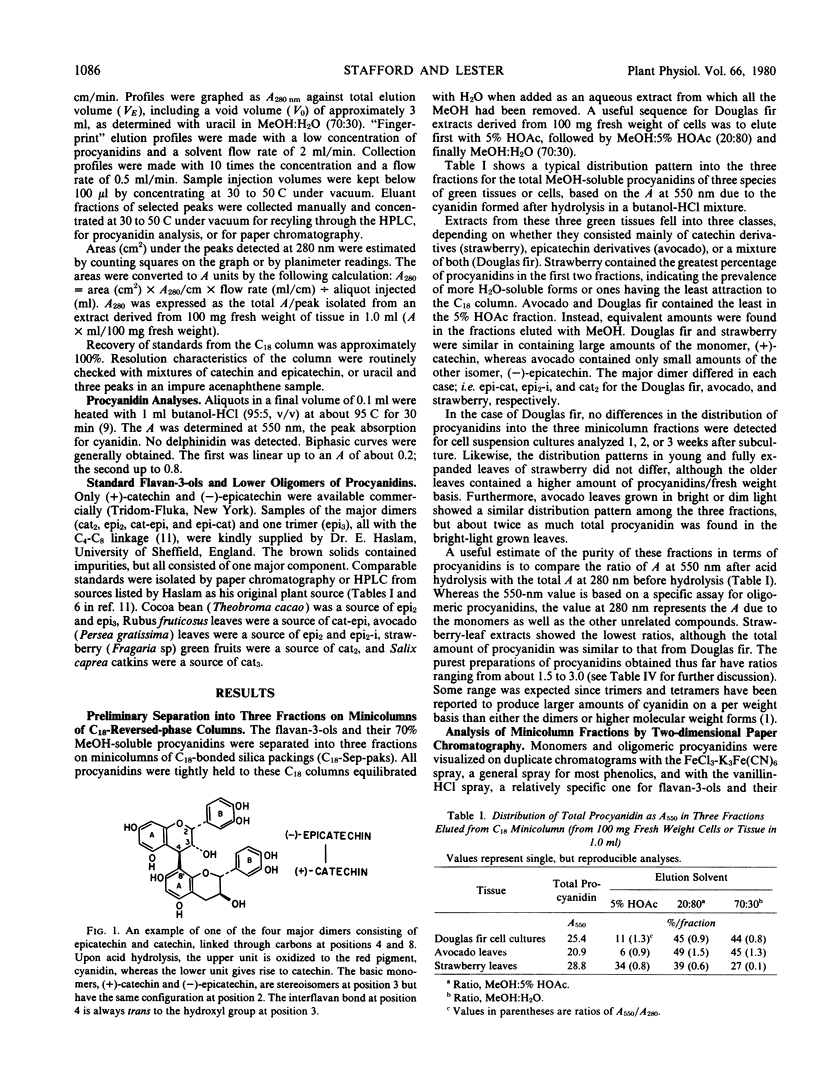
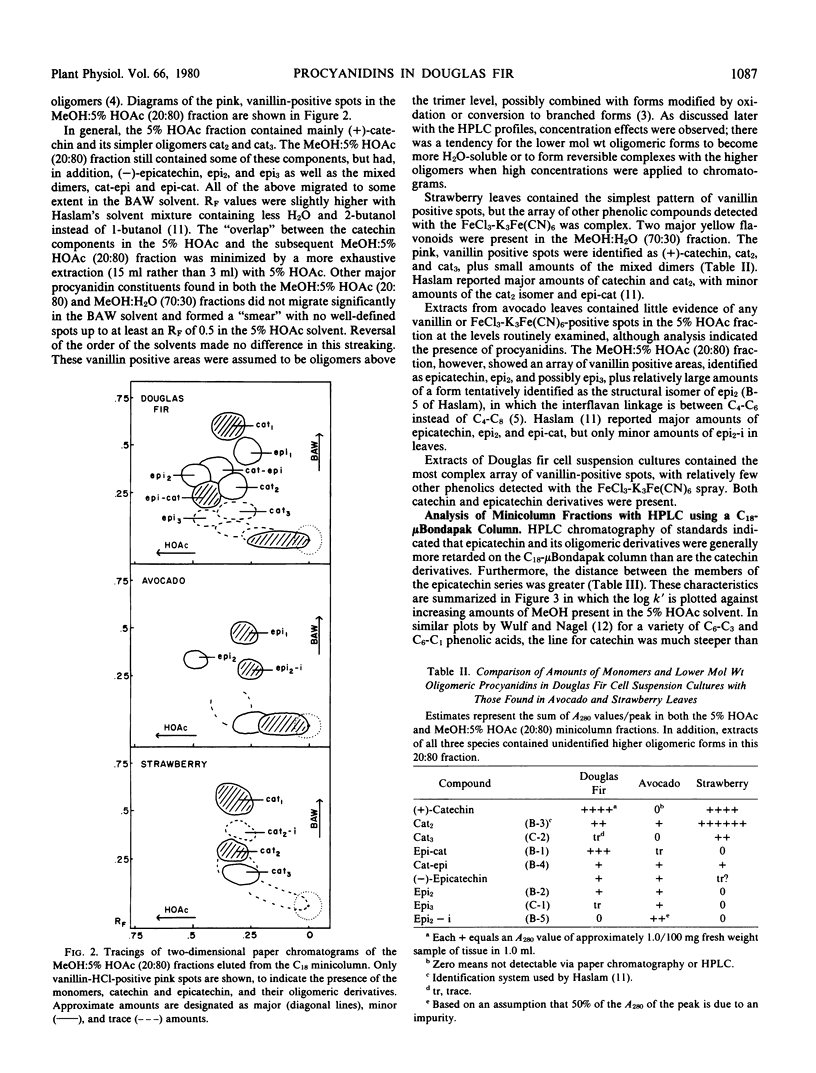

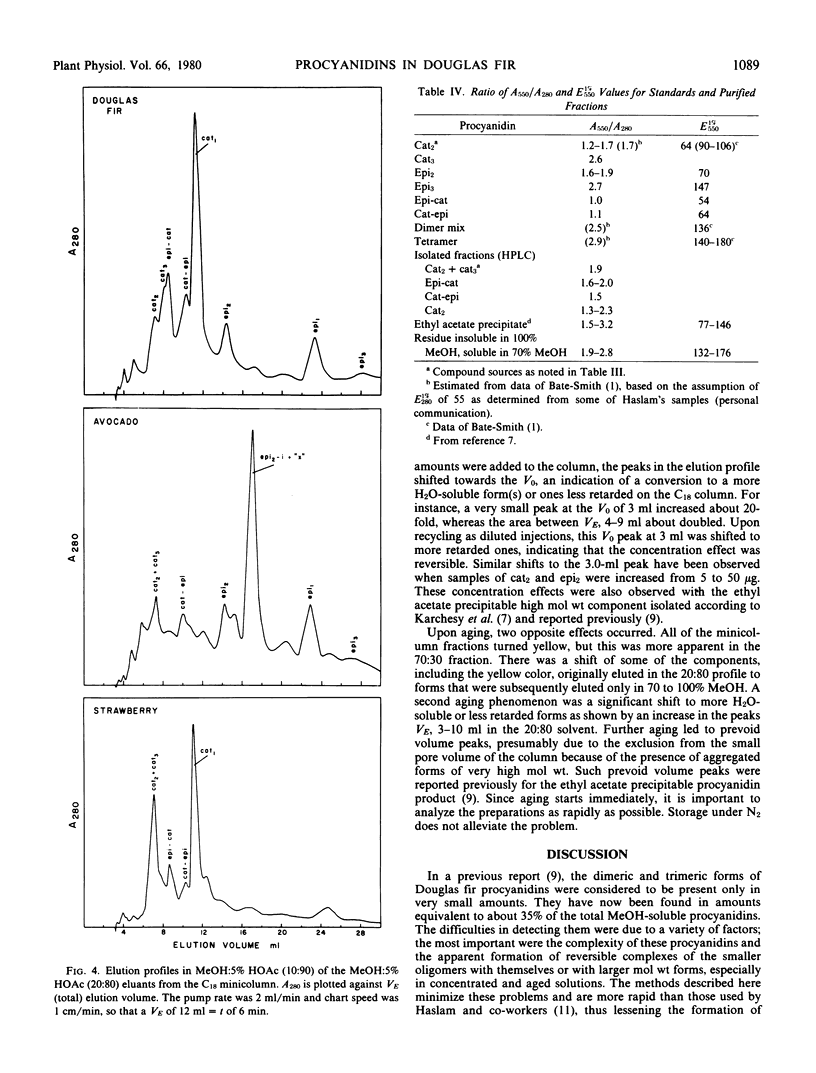
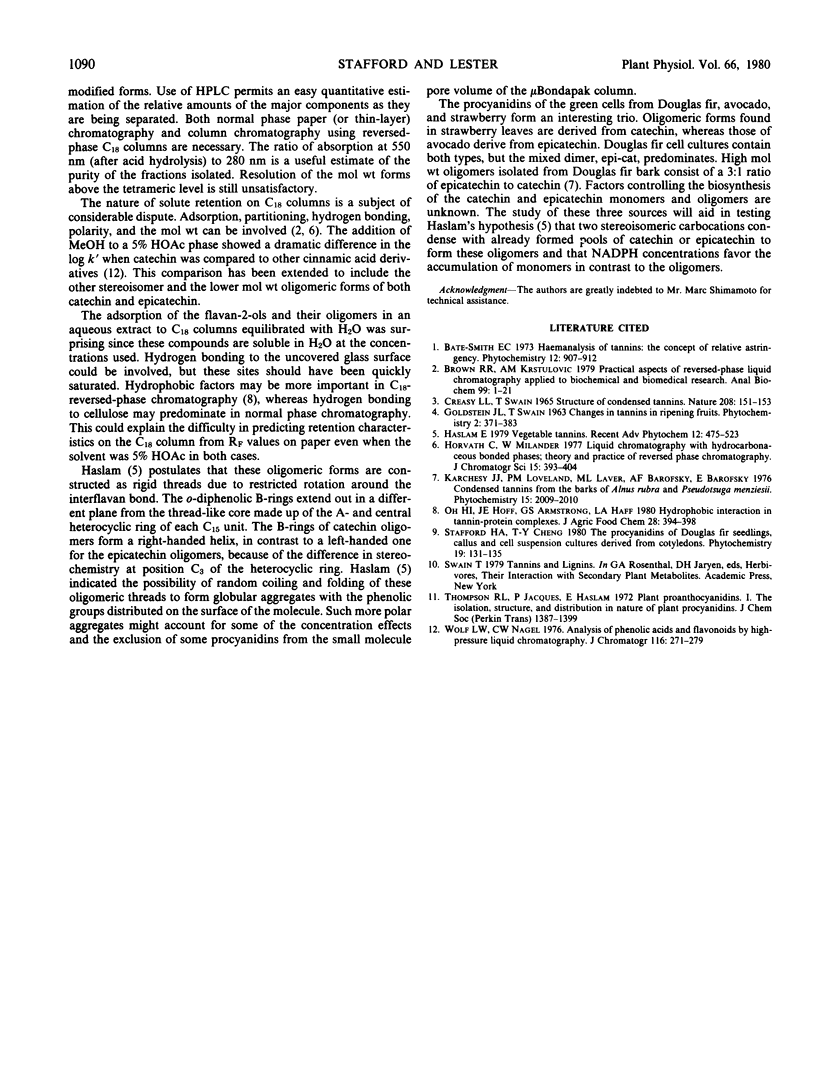
Selected References
These references are in PubMed. This may not be the complete list of references from this article.
- Brown P. R., Krstulovic A. M. Practical aspects of reversed-phase liquid chromatography applied to biochemical and biomedical research. Anal Biochem. 1979 Oct 15;99(1):1–21. doi: 10.1016/0003-2697(79)90038-1. [DOI] [PubMed] [Google Scholar]
- Creasy L. L., Swain T. Structure of condensed tannins. Nature. 1965 Oct 9;208(5006):151–153. doi: 10.1038/208151a0. [DOI] [PubMed] [Google Scholar]


